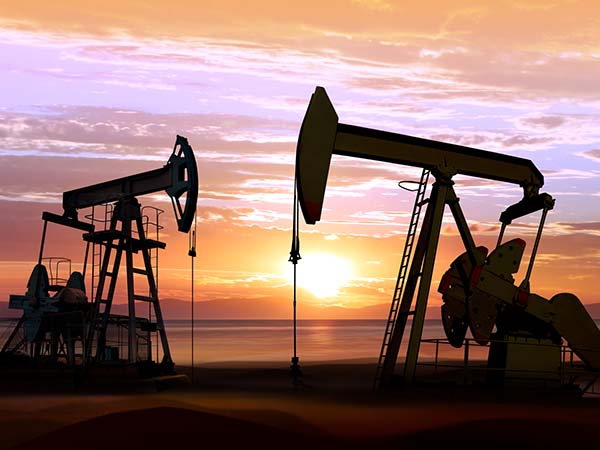Helping Technology Move Smoothly

Hidden Opportunities for All Players Behind Low Volumetric Demand for Finished Lubricants, Observes Kline
November 11, 2017
Oil and Gas Industry Future Looks Attractive
November 11, 2017Last November, the National Aeronautics and Space Administration launched a geosynchronous satellite, the GOES-16, designed to revolutionize weather forecasting. The spacecraft features high-definition image capture of hurricanes (in near real-time), floods, wildfires, and volcanic-ash clouds; it can help issue thunderstorm and tornado warning alerts; and it allows for advanced tracking of solar activity and flares. Satellites like the GOES-16 allowed the National Oceanic and Atmospheric Administration’s Weather Prediction Center to accurately predict the historic, devastating rainfall and damaging winds of Tropical Storm Harvey and Hurricane Irma long before they reached the U.S. southern shores.
Giant, deployable, solar-powered wings on this satellite, and spacecraft like it, help propel these units after launch. To prevent wear, these units are treated with low-vapor pressure lubricants—substances traditionally made of oil or grease to reduce friction and wear in machines with moving parts.
Since spacecraft don’t have access to routine maintenance after launch, they must be able to persist and function, untouched, over as long as a decade or two. No matter how carefully selected, greases or oils will likely creep away from bearing surfaces. So spacecraft bearings are typically lubricated with materials like molybdenum disulfide, a solid, inorganic, dry lubricant that can tolerate prolonged exposure to the vacuum of space. Self-lubricating coatings composed of molybdenum disulfide and titanium nitride have been developed for similar applications. Some radiation-resistant, liquid, perfluorinated oils are similar to molybdenum disulfide in that they can endure hostile temperatures and vacuums and dramatically extend the life span of bearings.
Really though, there aren’t many practical lubricants for cosmos travel quite yet. And that’s why lubricant innovation now lies at the heart of space exploration. Only with advanced lubricants can spacecraft function over long periods in the face of low ambient pressures, low or no gravity, extreme temperatures, radiation, and atomic oxygen.
Solid Technology
In the 1960s, Robert Nelson, a Stanford University professor, introduced a methodology to create a dry-film lubricant, tungsten disulfide—a technology used in NASA’s Mariner space program. Applications for the product expanded into aerospace, defense contracting, robotics, and automotive industries. And by the mid-1980s, molybdenum disulfide—a cheaper dry lubricant—entered and eventually dominated the market.
Since then, graphite, molybdenum disulfide, talc, and poly(tetrafluoroethylene) have joined the solid-lubricant arsenal, finding use in cars and jets. When it comes to aerial transportation, though, chemical components must contend with a unique set of challenges to help stand up to evolving demands.
In 1983, researchers Carl E. Snyder Jr. and Lois J. Gschwender argued that fluoropolymers had an unrealized market potential in aerospace applications because of their excellent performance and stability in extreme environments (Ind. Eng. Chem. Prod. Res. Dev. 1983, DOI: 10.1021/i300011a001). At the time, only poly(tetrafluoroethylene) and fluorinated ethylene propylene were popular as additives used to thicken lubricant greases. Snyder and Gschwender, though, discussed the potential merits of fluoropolymers in hydraulic fluids for commercial aircraft—responsible for energy transmission, lubrication, heat transfer, and contamination control.
Perfluorinated lubricants now comprise a complete range of oils and greases and are used when lasting longevity and extreme resistance are necessary. Examples include automotive heating and cooling systems, or in aerospace, where temperatures exceed 121 °C or fall below –18 °C. They are the go-to materials when contact with oxygen, nitrous oxide, or concentrated ammonia is unavoidable (perfluorinated compounds are nonflammable). “Supersonic flight and space travel would probably not have been possible without the use of perfluorinated materials that can withstand such harsh operating environments,” wrote Durham University chemistry professor Graham Sandford in his 2000 report, “Organofluorine chemistry” (Philos. Trans. R. Soc., A, DOI: 10.1098/rsta.2000.0541).
Airlines are now able to realistically invest in a supersonic-focused future that could slice global travel time in half by the mid-2020s. Engineers at Boom Technology, a three-year-old aerospace company, are working to produce a 45- to 55-seat civilian supersonic aircraft capable of flying up to Mach 2.2 (which is 2,337 km per hour). While the retired British-French turbojet Concorde broke the sound barrier on its cross-ocean trips (flying at Mach 2.04), Boom will be able to do so with a commercial jet that’s economically feasible.
“Technological progress in aerodynamic simulation, carbon-fiber composites, and modern turbofan engines allow us to now design a supersonic jet 30% more efficient than Concorde,” says Erin Fisher, flight control engineer at Boom. “Our lubrication system utilizes state-of-the-art seals and high-thermal-stability oils.”


